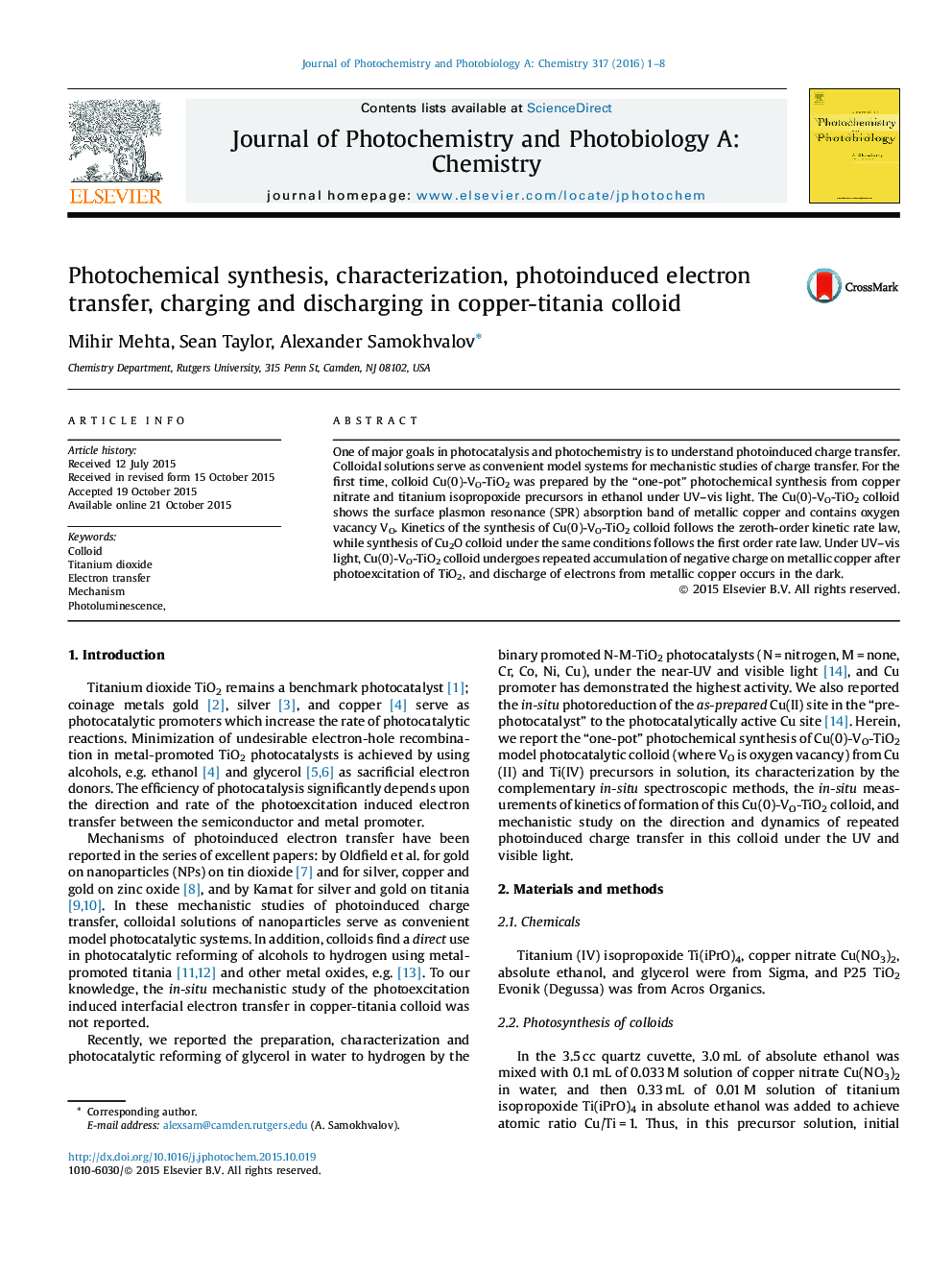| Article ID | Journal | Published Year | Pages | File Type |
|---|---|---|---|---|
| 26337 | Journal of Photochemistry and Photobiology A: Chemistry | 2016 | 8 Pages |
•The new Cu(0)-VO-TiO2 colloid is photochemically synthesized and characterized.•Cu(0)-VO-TiO2 colloid differs from Cu2O and TiO2 prepared by the same method.•Cu(0)-VO-TiO2 is formed via 0-th order rate law, while Cu2O is via 1-st order law.•Cu(0)-VO-TiO2 shows a repeated photoinduced electron transfer from TiO2 to Cu(0).•In the dark, discharge of electrons from Cu(0) in Cu(0)-VO-TiO2 colloid occurs.
One of major goals in photocatalysis and photochemistry is to understand photoinduced charge transfer. Colloidal solutions serve as convenient model systems for mechanistic studies of charge transfer. For the first time, colloid Cu(0)-VO-TiO2 was prepared by the “one-pot” photochemical synthesis from copper nitrate and titanium isopropoxide precursors in ethanol under UV–vis light. The Cu(0)-VO-TiO2 colloid shows the surface plasmon resonance (SPR) absorption band of metallic copper and contains oxygen vacancy VO. Kinetics of the synthesis of Cu(0)-VO-TiO2 colloid follows the zeroth-order kinetic rate law, while synthesis of Cu2O colloid under the same conditions follows the first order rate law. Under UV–vis light, Cu(0)-VO-TiO2 colloid undergoes repeated accumulation of negative charge on metallic copper after photoexcitation of TiO2, and discharge of electrons from metallic copper occurs in the dark.
Graphical abstractFigure optionsDownload full-size imageDownload as PowerPoint slide
